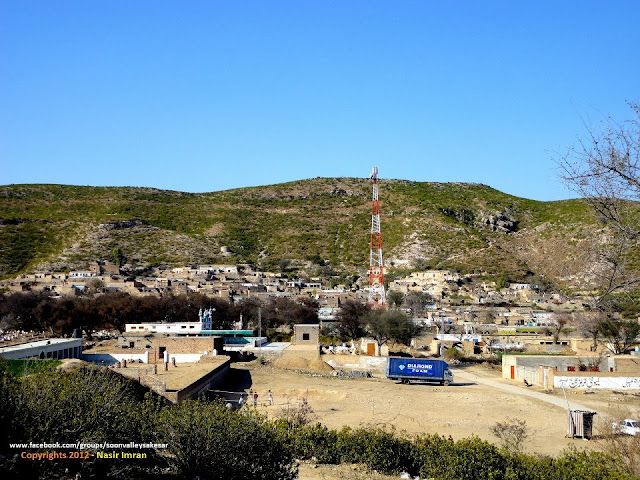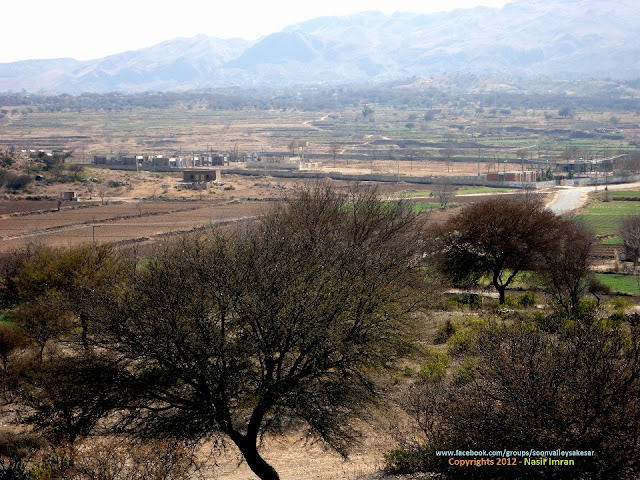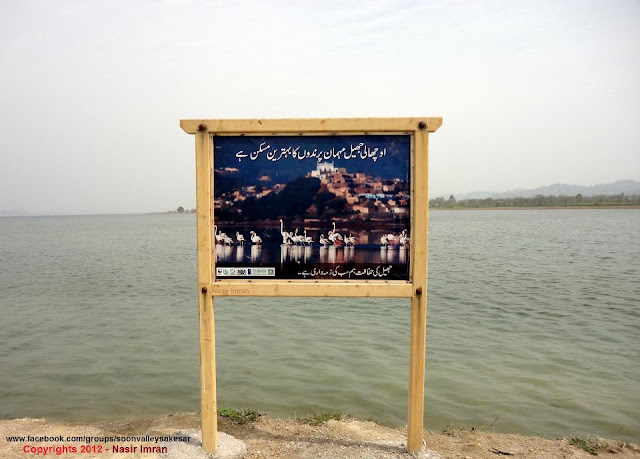Sabtu, 31 Maret 2012
Jumat, 30 Maret 2012
Mesothelioma symptoms, treatments, exposure and history
Mesothelioma
Mesothelioma is a rare form of cancer. It is used to describe a cancerous tumor which involves the mesothelial cells of an organ, usually the lungs or abdominal organs.
The most common type of mesothelioma is the pleural mesothelioma. The pleura is a thin membrane found between the lungs and the chest cavity. It provides a lubricated surface so that the lungs do not chafe against the chest walls. Thus, a pleural mesothelioma is often referred to as a “lung” cancer.
Another form of mesothelioma is the peritoneal mesothelioma. The peritoneum is the membrane that encloses the organs of the abdomen. While peritoneal mesothelioma is less common than pleural mesothelioma, it tends to be more invasive, and may thus result in a shorter life expectancy for the patient. Mesothelioma has also been found in the stomach and other abdominal organs.
Why Me?
A common question posed by persons afflicted with mesothelioma is, “Why did this disease develop in me?” The answer is nearly always the same-exposure to asbestos. When diagnosed in the United States, its onset is typically linked to a history of exposure to asbestos fiber. Asbestos is a mineral that was used for decades as a thermal insulation material. It has been widely known since the 1920’s that asbestos is a carcinogen, which means that it causes cancer in humans. However, asbestos was used as an insulator until the mid-1970’s, and is still present in massive quantities in many buildings today. Unfortunately, in many cases very little exposure is required to set this cancer in motion.
Mesothelioma symptoms can be very general and therefore they are often ignored. In most cases, symptoms for this type of cancer arise 2 to 3 months before the cancer is found.
Management of mesothelioma depends largely on the staging of the tumor. Early diagnosis and surgical intervention may lengthen life expectancy. Depending on the age and physical condition of the patient, however, surgery may not be a viable option. In addition to surgical options, radiation treatment and chemotherapy may be helpful in the overall therapeutic program. Pain management and home care are typical alternatives in the later stages of the disease.
See below to learn about the respective symptoms of each type of mesothelioma.
Peritoneal mesothelioma symtoms include:- Wight loss
- Vomiting
- Nausea
- Belly painPleural mesothelioma symptoms include:- Trouble swallowing
- Tireness
- Weight loss
- Progressive loss of appetite’
- Fluid in the ches cavity called “Pleural effusions”
- Pain at the side of the chest or the lower back
- Fever
- Difficulty sleeping
- Cough
Where Do I Go From Here?
After diagnosis, it is important to understand your treatment options. Your doctor or oncologist will provide you with information on the treatments that are available to you.
It is also important to know about your legal rights. If you have mesothelioma, or any other asbestos-related disease, you were most likely exposed to asbestos. Many of the manufacturers of asbestos insulation products knew for decades that asbestos was hazardous, yet made a business decision not to warn people of those hazards. As a result, you may have a right of recovery against those manufacturers, which can help defray the costs of treatment and provide compensation for your pain and suffering.
Treatment options for mesothelioma include surgery, radiation therapy and chemotherapy. These treatments are sometimes combined. Mesothelioma treatment depends on the location of the cancer, the stage of the disease and the patient’s age and general health.
Surgery
A mesothelioma treatment used either to remove the tumor or to alleviate pain and suffering. If the cancer is relatively contained, surgery can be used to remove part of the lining of the chest or abdomen. The objective is to remove the cancer cells from the body by removing the tissues with large numbers of cancer cells. If the cancer has spread to several organs, it is impossible to remove all of the tissue infected with cancer. In this case, surgery can only be used to relieve pain and suffering.
Chemotherapy
This treatment consists of using drugs to treat the cancer. The drugs can be swallowed in pill form or can be injected by a needle into a vein or muscle. Most of the drugs used in the treatment of lung cancer either directly kill cancer cells or stop them from dividing into new cells. The drug enters the bloodstream and circulates throughout the body to reach and destroy the cancer cells. Chemotherapy targets the entire body and can kill normal cells as well as the diseased cells, causing severe side effects.
Radiation
Radiation therapy is the use of high level radiation to kill cancer cells in a localized area. The radiation injures the cancer cells so they cannot divide or multiply further. With each treatment, more of the cells die and the tumor shrinks. The dead cells are broken down and excreted by the body. Most of the healthy cells are able to recover from this injury, but the damage to them is the cause for the side effects of radiation therapy.
Gene therapy
An experimental medical intervention that involves altering the patient’s genetic material of living cells to fight or prevent disease. The therapy involves injecting a modified gene directly into a patient’s chest cavity. The goal of gene therapy is to supply cells with healthy copies of missing or altered genes. Many different strategies are currently under study.
Immunotherapy
An experimental therapy that uses the body’s natural defenses to fight cancer. This can include stimulating your own immune system to work harder, or using an outside source, such as man-made immune system proteins. Immunotherapy is usually used in conjunction with another type of therapy.
Photodynamic Therapy
An experimental treatment which combines a photosensitizing agent (a drug activated by light) with a light source to destroy cancer cells. The theory is that the photosensitizing agent collects more readily in cancer cells than in normal cells. Thus, when the agent is subsequently exposed to light, it reacts with oxygen to create chemicals that can kill the cancer cells.
Specialized techniques may be used by your doctor to relieve symptoms and control pain, such as
thoracentesis and paracentesis. During these precedures a needle or a thing tube is used to drain fluid that has built up in the chest or abdomen area. Paracentesis is a procedure in which fluid is removed from the abdomen. Removal of fluid from the chest is called Thoracentesis. Drugs may also be administered through a tube by your doctor in order to prevent more fluid from accumulating. Surgery and radiation therapy may also be helpful in relieving sumptoms.
thoracentesis and paracentesis. During these precedures a needle or a thing tube is used to drain fluid that has built up in the chest or abdomen area. Paracentesis is a procedure in which fluid is removed from the abdomen. Removal of fluid from the chest is called Thoracentesis. Drugs may also be administered through a tube by your doctor in order to prevent more fluid from accumulating. Surgery and radiation therapy may also be helpful in relieving sumptoms.
Alabama
California
Connecticut
Washington, D.C.
Florida
Illinois
Maryland
Masschusetts
Michigan
| Nebraska
New Mexico
New York
North Carolina
Ohio
Pennsylvania
Tennesse
Texas
Washington
|
Occupations that deal with asbestos and which are often associated with the onset of mesothelioma later in life are as follows:
Aerospace Building Engineers Building Managers Building Inspectors Contractors Custodians Demolition Crews Electricians Excavating machine operators Floor Coverers Former US Navy Personnel Glass Factory Worker Heavy Equipment Mechanics | Home Improvement Hospital Insulators Die setters Laborers Manufacturing Workers Mechanic Mixing Operatives Gasket Manufacturing Workers Painters Paper Mill Workers Plasters Plumbers | Pot Tenders Protective Clothing Manufacturing Rubber Worker Sawyers Schools Steam Fitters Teachers Technicians Tile Setters Tinsmiths Warehouse Worker Weavers Welders |
Mesothelioma v. Adenocarcinoma
The differential diagnosis of mesothelioma versus adenocarcinoma is one that usually has both medical and legal implications. In the past, the application of special techniques, ranging from special stains (e.g., mucicarmine) to electron microscopic analysis (e.g., to search for microvilli), was required to distinguish between these tumors. At the present time, however, in the vast majority of the cases, immunohistochemical studies, utilizing a limited number of antibodies, can reliably distinguish adenocarcinoma and mesothelioma. In the past, immunohistochemistry studies have been most helpful in contributing to the diagnosis of mesothelioma by demonstrating the absence of expression of adenocarcinoma-restricted proteins, such as CEA and CD15. While these latter markers can still play a role as partial discrimination of mesothelioma from adenocarcinoma, more sensitive markers of adenocarcinoma, such as the MOC-31 and Bg8-defined antigens, are preferred 'first line' reagents. Furthermore, there are now a set of immunohistochemically-defined positive markers of mesothelioma, such as calretinin, the Wilms tumor gene product (WT-1), cytokeratin 5, and mesothelin. The immunohistochemical approach to the diagnosis of mesothelioma has been an area of active clinical research at PhenoPath Laboratories, with ongoing studies in conjunction with Dr. Hector Battifora.
Markers generally positive in adenocarcinoma, and usually negative in mesothelioma:
- Lewis Y antigen (identified by antibody Bg8)
- Tumor glycoprotein (identified by antibody MOC-31)
- Tumor glycoprotein (identified by antibody Ber-Ep4)
However, the sensitivities of adenocarcinoma markers such as those identified by antibodies MOC-31, Bg8, and BerEp4 vary markedly depending on the primary site of the adenocarcinoma.
Markers generally positive in mesothelioma, and usually negative in adenocarcinoma:
- Calretinin
- Wilms tumor gene product (WT-1)
- Cytokeratin 5
- Mesothelin
The sensitivities of the mesothelial markers also vary, with markers such as cytokeratin 5 and mesothelin showing diminished sensitivity in sarcomatoid variants. A small subset of adenocarcinomas can express each one of these mesothelial markers (e.g., WT-1 in papillary serous carcinomas of the ovary, and cytokeratin 5 in a subset of pancreatic and other carcinomas); therefore it is critical that results of immunohistochemical studies be integrated with the histologic findings and the clinical setting.
| H&E Malignant pleural effusion in a 68 year-old male with a history of smoking and workplace related asbestos exposure. H&E stained sections show clusters of malignant epithelial cells with the differential diagnosis of mesothelioma vs. adenocarcinoma. |
| Calretinin | CK5 |
| Bg8 | MOC-31 |
| The immunophenotype of these malignant cells is unequivocally that of adenocarcinoma, as the tumor cells are negative for expression of the mesothelial-related markers, calretinin and cytokeratin 5 (with scattered background reactive mesothelial cells serving as positive 'internal controls'). The tumor cells demonstrate expression of the Bg8 and MOC-31 defined antigens, pointing to the diagnosis of adenocarcinoma. Further studies demonstrated expression of TTF-1 and surfactant ApoA protein, further identifying this as a non-small cell carcinoma of lung origin. THANXX http://www.phenopath.com | |
Rabu, 28 Maret 2012
Brand measurement research using the DoubleClick for Advertisers platform
We think that better online brand measurement is a hugely important area where technology can play a significant role. We’ll have much more to announce in the coming months; but we wanted to highlight one early experiment. Our research team is working with our clients and Vizu to conduct online brand measurement research for about 70 DFA campaigns.
The IAB’s publication on online ad effectiveness measurement noted that true experimental design (creating consistent, randomly assigned control groups) would be a major step forward in online ad effectiveness research. Our approach does just that. We use DoubleClick ad serving technology to create two randomly selected groups of users - one that sees the campaign’s ads, and another that sees public service ads instead. We maintain this control group for the duration of the campaign, across all sites where DFA serves ads. Vizu’s sampling technology is then used to deliver a brand lift survey to all users so that we may individually measure variables like brand awareness, purchase intent and favorability.
The brand results, presented through DFA, will show how ads performed across the campaign, as well as different sites and ad frequencies. This data can be used with the other campaign metrics in DFA to help marketers to see the impact of the campaign using any metric they want - from impressions to clicks to brand impact to conversions.
Sherrill Mane, Senior Vice President of Research, Analytics and Measurement at the IAB commented, “This is very promising and innovative research. After years of settling for less than optimal designs, the industry will finally see if a true experimental design is possible through the use of technology. The results of this research, if successful, could have far reaching implications for the future of brand impact measurement of online advertising campaigns.”
DoubleClick is sponsoring the survey research for all participating clients. We hope this pilot will show that the use of experimental design principles is a great way to address the brand measurement challenge, and to provide real and actionable insights to brand marketers. It’s one of our early stage efforts to re-imagine measurement for online marketers.
To participate in the Brand Lift experiments pilot with DoubleClick and Vizu, you can contact either your DoubleClick or Vizu sales representative for more information and eligibility requirements.
The IAB’s publication on online ad effectiveness measurement noted that true experimental design (creating consistent, randomly assigned control groups) would be a major step forward in online ad effectiveness research. Our approach does just that. We use DoubleClick ad serving technology to create two randomly selected groups of users - one that sees the campaign’s ads, and another that sees public service ads instead. We maintain this control group for the duration of the campaign, across all sites where DFA serves ads. Vizu’s sampling technology is then used to deliver a brand lift survey to all users so that we may individually measure variables like brand awareness, purchase intent and favorability.
The brand results, presented through DFA, will show how ads performed across the campaign, as well as different sites and ad frequencies. This data can be used with the other campaign metrics in DFA to help marketers to see the impact of the campaign using any metric they want - from impressions to clicks to brand impact to conversions.
Sherrill Mane, Senior Vice President of Research, Analytics and Measurement at the IAB commented, “This is very promising and innovative research. After years of settling for less than optimal designs, the industry will finally see if a true experimental design is possible through the use of technology. The results of this research, if successful, could have far reaching implications for the future of brand impact measurement of online advertising campaigns.”
DoubleClick is sponsoring the survey research for all participating clients. We hope this pilot will show that the use of experimental design principles is a great way to address the brand measurement challenge, and to provide real and actionable insights to brand marketers. It’s one of our early stage efforts to re-imagine measurement for online marketers.
To participate in the Brand Lift experiments pilot with DoubleClick and Vizu, you can contact either your DoubleClick or Vizu sales representative for more information and eligibility requirements.
Posted by Jim Dravillas, Google Research team
Selasa, 27 Maret 2012
Mobile search campaigns: Get the most out of them with DoubleClick Search
(cross posted from the DoubleClick Search blog)
A few relevant statistics:
All of these figures are growing rapidly, with many analysts predicting mobile web activity to increase by several times in 2012.
Most advertisers will benefit from targeting mobile searchers, but not everything you’ve learned from your experiences optimizing for desktop search applies to mobile.
Here are some best practices for managing mobile campaigns, and specific instructions for doing so within DoubleClick Search.
1. Create separate campaigns for each platform you’re targeting.
Because everything from your budget to your landing pages to your keyword list will differ for your desktop, smartphone, and tablet campaigns, it’s highly recommended to create separate campaigns for each of these. Some advertisers find it easier to manage their mobile and tablet campaigns in completely separate engine accounts.





- Smartphone users now account for 9% of all online traffic
- Mobile searches have grown by 400% since 2010
- By 2013, more people will use mobile devices than PCs to get online
Most advertisers will benefit from targeting mobile searchers, but not everything you’ve learned from your experiences optimizing for desktop search applies to mobile.
Here are some best practices for managing mobile campaigns, and specific instructions for doing so within DoubleClick Search.
1. Create separate campaigns for each platform you’re targeting.
Because everything from your budget to your landing pages to your keyword list will differ for your desktop, smartphone, and tablet campaigns, it’s highly recommended to create separate campaigns for each of these. Some advertisers find it easier to manage their mobile and tablet campaigns in completely separate engine accounts.
DS3 note: Tablet-specific targeting will have to be set directly in the search engine user interfaces.
2. Write specific ad texts for different device operating systems
Especially useful if you’re selling smartphone-related products such as apps or content, you can use AdWords’ additional settings to target only Android or iOS devices, and write ad copy that highlights your user’s device preference to increase engagement.
2. Write specific ad texts for different device operating systems
Especially useful if you’re selling smartphone-related products such as apps or content, you can use AdWords’ additional settings to target only Android or iOS devices, and write ad copy that highlights your user’s device preference to increase engagement.
DS3 note: Create separate campaigns for each device platform in DS3 as above, setting the Advanced mobile and tablet options in the AdWords interface.
3. Bid differently
Smartphones and tablets will have fewer ad slots available per page of search results, and as a result, you may need to target a higher position in your mobile campaigns to receive traffic.
3. Bid differently
Smartphones and tablets will have fewer ad slots available per page of search results, and as a result, you may need to target a higher position in your mobile campaigns to receive traffic.
DS3 note: Employ position-only bid strategies or CPA strategies with a position target to bid for higher ad slots for your mobile campaigns.
4. Direct users to a mobile-optimized landing page
While the resolution of smartphone screens keeps increasing, they still don’t approach that of desktops and laptops, so all advertisers serious about getting mobile traffic should create a mobile-specific site to use as a destination for your mobile search campaigns. Howtogomo.com provides great tools to help advertisers and agencies optimize their sites for the small screen.
4. Direct users to a mobile-optimized landing page
While the resolution of smartphone screens keeps increasing, they still don’t approach that of desktops and laptops, so all advertisers serious about getting mobile traffic should create a mobile-specific site to use as a destination for your mobile search campaigns. Howtogomo.com provides great tools to help advertisers and agencies optimize their sites for the small screen.
DS3 note: When copying keyword lists from a desktop campaign, test your landing pages on a mobile device or using a device emulator to make sure they go to the mobile version of the site, either directly or via a redirect.
5. Tailor your keyword list to the mobile searcher
It’s still a good idea to copy the keywords from your desktop campaigns as a starting point. However, mobile searches still tend to contain fewer terms than desktop, so it’s likely long-tail keywords that receive traffic on the desktop will be less effective in smartphone campaigns and may even bring down your quality score. Also, many mobile searches (over 20%) contain geomodifiers; be sure you’re including those city and region names in your keywords for stronger matches.
5. Tailor your keyword list to the mobile searcher
It’s still a good idea to copy the keywords from your desktop campaigns as a starting point. However, mobile searches still tend to contain fewer terms than desktop, so it’s likely long-tail keywords that receive traffic on the desktop will be less effective in smartphone campaigns and may even bring down your quality score. Also, many mobile searches (over 20%) contain geomodifiers; be sure you’re including those city and region names in your keywords for stronger matches.
DS3 note: If you have longer-tail terms in a desktop campaign you don’t want to appear in your mobile campaign for QS or other reasons, it’s faster and cleaner to delete them from your keyword create bulksheet before uploading into DS3 rather than creating and deleting later.
6. Bridging online and offline
Mobile click-to-call campaigns can be powerful lead generators. When setting up a click-to-call campaign, consult with your DoubleClick Search Technical Account Manager to learn how DS3 can import data from your advertisers’ call tracking solution to allow optimization on both online and offline conversions.
With a lightning-fast UI, efficient workflow, and best-in-class infrastructure, DoubleClick Search allows you to quickly and intelligently manage and optimize your mobile search campaigns at scale.
6. Bridging online and offline
Mobile click-to-call campaigns can be powerful lead generators. When setting up a click-to-call campaign, consult with your DoubleClick Search Technical Account Manager to learn how DS3 can import data from your advertisers’ call tracking solution to allow optimization on both online and offline conversions.
With a lightning-fast UI, efficient workflow, and best-in-class infrastructure, DoubleClick Search allows you to quickly and intelligently manage and optimize your mobile search campaigns at scale.
- Posted by the DoubleClick Search team
Soon Valley Sakesar Khushab
 |
| uchali , khabeki lake Soon Valley Sakesar Khushab |
 |
| uchali , khabeki lake Soon Valley Sakesar Khushab |
 |
| Soon Valley Sakesar Khushab |
 |
| Soon Valley Sakesar Khushab |
 |
| Soon Valley Sakesar Khushab |
 |
| Soon Valley Sakesar Khushab |
 |
| Soon Valley Sakesar Khushab |
 |
| cadet college khura Soon Valley Sakesar Khushab |
 |
| soon Valley Sakesar Khushab |
 |
| soon Valley Sakesar Khushab |
 |
| soon Valley Sakesar Khushab |
 |
| uchali lake soon Valley Sakesar Khushab |
 |
| soon Valley Sakesar Khushab |
 |
| soon Valley Sakesar Khushab |
 |
| soon Valley Sakesar Khushab |
Langganan:
Postingan (Atom)


























